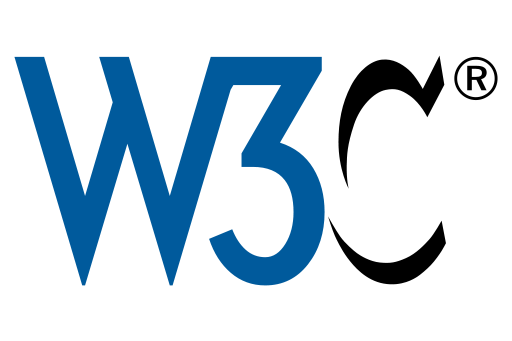Government agencies in Australia were required to update their websites to WCAG 2.0 compliance as specified under the NTS; they went from Level A (Single A) by the end of 2012, Level AA (Double A) by the end of 2014. Compliance meant all of the WCAG 2.0 requirements had to met. Several other industries including healthcare and other organisations assisting those with disabilities have made accessibility a key requirement for their sites.
Many other organisations across a range of industries are also following suit.
Now Australian Government agencies are required to meet the Web Content Accessibility Guidelines (WCAG) Level 2.1.
WCAG 2.1 is an extension of WCAG 2.0 that focuses on improving web accessibility for people with cognitive and learning disabilities, low vision, and users of mobile devices.
In this article, we will explore the latest updates in WCAG 2.1 and how it impacts web development.
What is Accessibility?
The WCAG 2.1 requirements include many guidelines that help to make Internet content accessible to those with sensory disabilities related to hearing, eyesight and perception.
WCAG 2.1 builds on WCAG 2.0 guidelines, with 17 new success criteria to ensure web accessibility for a wider audience.
In its simplest form, WCAG 2.1 compliance means that a website has to come up to scratch in two main areas, content and markup. Content includes everything that a user interacts with or captures from the site, such as text, images, videos, navigation, menus, forms and sounds; and markup is the site’s underlying code which tells a browser how to display the content.
Catering for different user types is a challenge in itself and there is obviously more than disability or impairment type to take into account.
New Success Criteria:
WCAG 2.1 includes 17 new success criteria, with a focus on improving accessibility for people with cognitive and learning disabilities. Some of the new success criteria include:
- Providing a clear and concise page title that describes the purpose of the page.
- Ensuring that content can be presented in different ways, such as through different font sizes or color contrasts.
- Providing keyboard shortcuts to important links and functions, allowing users to navigate the site more efficiently.
- Spacing between characters, words, and paragraphs can be adjusted by the user without loss of content or functionality.
- Content can be presented without loss of information or functionality when the viewport size is changed, without requiring the user to scroll horizontally or zoom the content.
- Navigation mechanisms be consistent throughout the website, so that users can predict how to move around the site and find information.
- Authentication mechanisms, such as login screens, be accessible to users with disabilities, including those who use assistive technologies.
How can CMS help?
WCAG 2.1 compliance is becoming increasingly important for websites across a range of industries, including healthcare and government agencies. The Australian government has updated its guidelines to require compliance with WCAG 2.1, with all websites owned by the government required to meet Level AA conformance by December 31, 2020.
A CMS which complies with WCAG 2.1 standards should have the power to create content that is accessible automatically. Once set up, a good CMS should have the ability to manage markup and produce dynamic web pages without you having to go through the underlying code and content with a fine toothcomb.
In order to meet standards, a website audit should comply with the following four important principles:
- Perception: visitors to the site must be able to browse information and it must be presented in a way that can be perceived by all users, including those with sensory disabilities.
- Operation: the web interface must be simple to use, with clear and consistent navigation menus.
- Understanding: the information contained on the site must be understandable to all, with clear language and simple instructions.
- Cross-platform: the way a site is displayed must be interpreted across a variety of browsers, screen readers, and other assistive technologies.
These principles help to ensure that websites are accessible to all users, including those with disabilities.
The following are some examples of how to become compliant with these rules and guidelines:
Expanding Online Perception
Businesses should strive to make both user interface components and the information provided accessible to as many people as possible. Alternatives to text such as audio can assist those who have vision issues. In the case of a “CAPTCHA” online verification, a non-text alternative is crucial for those who cannot see the test.
Alternatives for Time-Based Media
Alternatives to video-only or audio-only content should also be provided for users with vision or hearing issues. Captions or sign language alternatives should be offered as an option for those with hearing problems. Businesses should generally strive to create content presentation that doesn't compromise quality, structure or information.
Changing Color and Contrast
In both visual and audio media, taking steps to separate the foreground content from its background elements can make perception and assimilation easier for users. Dropping out background hiss or noise in audio content can assist users in hearing the main content more clearly. Adequate contrast in text and visual media can assist with perception as well. Text should also be resizable to at least 200% by the user.
User Controls
Audio or video longer than 3 seconds should be controllable by the user so that they can pause, stop and start the media as needed in order to understand it fully. Volume control should also be provided. A mechanism for identifying abbreviations and also specific definitions of unusual text or jargon used online should be made available to those without easy access to such information.
Layout of Web Pages
Web pages should be laid out in logical and expected ways, as should navigational mechanisms and other components throughout a website. Context changes should be able to be initiated with a mechanism provided to the user or by user request. For web pages requiring information input, the submissions should be correctable and reversible. Content should be robust enough to be interpreted by a range of users, including those using assistive technology.
Compatibility with Assistive Technology
Compatibility with these technologies should be addressed in website building and upkeep in an ongoing way. Websites should be created in a way that allows them to be compatible with the highest number of assistive technologies possible. These include but are not limited to visual reading assistants such as screen magnifiers, screen readers (used by persons who are blind so that they can read textual information via Braille or synthesized speech), text-to-speech software, speech recognition software, alternative keyboards (such as those with head pointers, sip/puff usage, single switches, and other special input mechanisms), and alternative pointing devices (other than a mouse or touch screen).
Following the lead of the Australian government, businesses and other private sector organisations should ideally avoid technologies that are not conducive to being WCAG 2.1 compliant unless they can be made accessible through augmentation of some kind.
Bringing the Internet to As Many Users As Possible
Content should preferably be created to help maximise and support accessibility to as many users as possible, regardless of their physical challenges. Users have varied needs, and not only is it the law to strive to create a level playing field for users with disabilities; it also just makes good business sense. While progressive enhancement is one approach to becoming compliant, other companies might find it prudent to recreate their Internet presence entirely from the ground up in order to be compliant across a range of operating systems and web browsers.
Why is WCAG 2.1 so important? Because it allows for users from a much wider range of ability levels to have access to the rich, vibrant and ever-evolving content landscape that is available on the Internet. While some users simply will not have access to all types of media online due to their specific physical or cognitive limitations, compliance with WCAG 2.1 allows for other alternatives that can act as a replacement and give them as much of the online experience as possible. All businesses and organisations should strongly consider taking steps to make their online presence WCAG 2.1 compliant.

WCAG 2.1 Level AA Compliance in the Elcom platform
Elcom is committed to supporting and maximising accessibility for all web users. In the latest version of Elcom, AA accessibility compliance has been delivered to base administration screens, the core authoring experience and selected modules.
This is particularly beneficial to government departments requiring compliance with government regulations, or the organisations focused on assisting those with disabilities, regarding the need for accessible websites.
This enables selected front-end screens, the authoring and administration interfaces within the Elcom platform to be accessible through the use of screen readers and other aids.
The Elcom team have created accessible sites for a range of organisations including The Benevolent Society and NSW Health Education Centre Against Violence.
Key Benefits
Users can now take full advantage of keyboard navigation and administration controls via keyboard shortcut commands:
- The Elcom platform together with the right user training, enables users to create content that is friendly to screen readers
- Employees with vision impairments now gain far greater access to websites and the content management and administration of the platform
For a full list of Elcom platform AA compliant features and modules, click here.
For more information about the Elcom CMS, click here.
